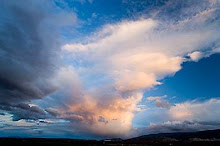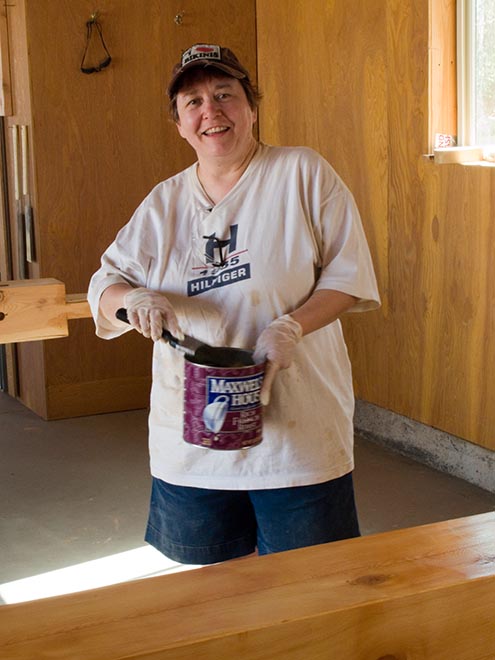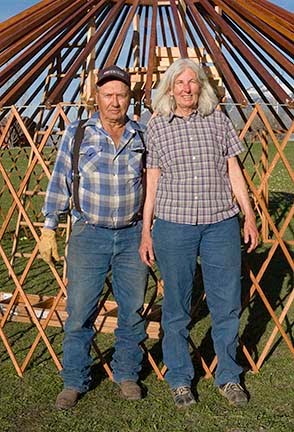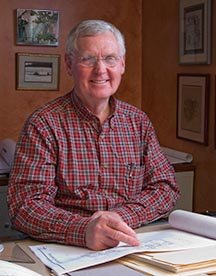Yesterday we received the following text message from Rich, our Serious Windows sales representative: "Brick mould on way to warehouse tomorrow will arrange for our tech to travel to Torrey and install brick mould and help you install windows."
Hooray!
Tuesday, July 26, 2011
Sunday, July 24, 2011
Windows In Our World
From the outset, Scott and I agreed we would be willing to spend money on three big ticket items - the roof, the solar hot water system and the windows. These would be necessary expenses in order to achieve the high energy efficiency we were striving for. The roof and solar hot water system are behind us. Now we are down to the windows, Serious Windows to be precise.
The sales representative, Rich Barker, has really worked on our behalf since we began talking with him over a year ago. Our plans call for twenty-one windows (fixed, awning and double-hung) plus six Therma-Tru doors which are the only doors Serious Windows puts their glass in.
Originally we wanted wood frames. However, Serious does not make windows with wood frames inside and outside. They only produce them with inside wood. My parents have wood frames, and Mom said, if she had to do it over again, she would not have wood because it takes too much time to maintain. You should always listen to your mother, so Scott and I opted for fiberglass frames inside and out. I hope this choice really does save us maintenance time in the future, but I know it has saved us a few dollars now.
Once we went over and over and over the options and sizes, we had to decide when to purchase them. If we ordered early, we would have to store windows through the winter. The only place we could do that, the garage, was filled with bales of straw. In addition, an early order would mean money would leave our savings account sooner than we had planned, so we decided to order when the 2011 building season began.
Rich was fine with our schedule. However, in late fall of 2010, he called to let us know Serious Windows would soon institute a price increase that would cost us several thousand dollars. Knowing this, we opted to place our order immediately and wrote a check for sixty percent of the purchase price. Rich submitted our order in a manner that put the production of our windows on a schedule that would have them arrive just as we needed them thus avoiding a need for storage.
Two problems presented themselves as, in three separate deliveries, all of our windows and doors arrived. On the south side of our house, the view side, there are to be three very large windows, each about five feet high by eight feet long. Each of these windows weighs over 300 pounds. When the shipments arrived here in Torrey, it was our responsibility to unload them. Fortunately we had Orangejello, our tractor. Still, windows that large are problematic.
Here you can see our solution to getting them from the semi to the house. Problem solved.
Now we have four of six doors and eighteen of twenty-one windows installed. The remaining two doors must wait because our stone mason neighbor, Wade, needs to set sandstone thresholds in place. The remaining three windows are our huge picture windows. Serious Windows delivered them without the factory installed brick mold or nailing fins which were part of our order. These items are necessary for proper installation. Rich, the sales rep, is working to fix this situation. We await a satisfactory solution.
The sales representative, Rich Barker, has really worked on our behalf since we began talking with him over a year ago. Our plans call for twenty-one windows (fixed, awning and double-hung) plus six Therma-Tru doors which are the only doors Serious Windows puts their glass in.
Originally we wanted wood frames. However, Serious does not make windows with wood frames inside and outside. They only produce them with inside wood. My parents have wood frames, and Mom said, if she had to do it over again, she would not have wood because it takes too much time to maintain. You should always listen to your mother, so Scott and I opted for fiberglass frames inside and out. I hope this choice really does save us maintenance time in the future, but I know it has saved us a few dollars now.
Once we went over and over and over the options and sizes, we had to decide when to purchase them. If we ordered early, we would have to store windows through the winter. The only place we could do that, the garage, was filled with bales of straw. In addition, an early order would mean money would leave our savings account sooner than we had planned, so we decided to order when the 2011 building season began.
Rich was fine with our schedule. However, in late fall of 2010, he called to let us know Serious Windows would soon institute a price increase that would cost us several thousand dollars. Knowing this, we opted to place our order immediately and wrote a check for sixty percent of the purchase price. Rich submitted our order in a manner that put the production of our windows on a schedule that would have them arrive just as we needed them thus avoiding a need for storage.
Two problems presented themselves as, in three separate deliveries, all of our windows and doors arrived. On the south side of our house, the view side, there are to be three very large windows, each about five feet high by eight feet long. Each of these windows weighs over 300 pounds. When the shipments arrived here in Torrey, it was our responsibility to unload them. Fortunately we had Orangejello, our tractor. Still, windows that large are problematic.
Here you can see our solution to getting them from the semi to the house. Problem solved.
Now we have four of six doors and eighteen of twenty-one windows installed. The remaining two doors must wait because our stone mason neighbor, Wade, needs to set sandstone thresholds in place. The remaining three windows are our huge picture windows. Serious Windows delivered them without the factory installed brick mold or nailing fins which were part of our order. These items are necessary for proper installation. Rich, the sales rep, is working to fix this situation. We await a satisfactory solution.
Sunday, July 17, 2011
Fun With Plaster
Today was a celebration day. We got to do some real work with plaster. Yesterday, however, was a different story because the mortar mixer we purchased last year at a terrific bargain price wouldn’t start even though it had started on the first pull every single time since we purchased it. Maybe it was just putting on an act, and, when we were ready to get down to business, it showed its true colors. Luckily, brother-in-law Doug was patient and persistent, and Mr. Mixer roared back to life this morning and rejoined the team.
Once that big repair was completed, we organized our plaster assembly line beside the mixer so we wouldn’t have to haul the plaster ingredients long distances. Since we are all older than we used to be, we also wanted to be able to lift the ingredients into the mixer without hurting our backs, so we lined up buckets of manageable size and started mixing.
We situated the clay sifting station nearby with plenty of shovels standing at the ready so anyone who drops by for a visit can make themselves useful.
The light clay straw stage is behind us. That’s the straw that is coated with clay slip and stuffed into the gaps between the bales. Now we are applying the first coat (scratch coat) of plaster. When we are completely finished, our plaster will be about two inches thick. This first coat is about half of that thickness. It covers the straw and provides the key for the last two layers. There is no special technique. At a workshop, they said, "Just get a bunch of mud on the wall." That's what we'll try to do.
 Here we have applied four sample recipes to the west wall.
Here we have applied four sample recipes to the west wall.
Using our Torrey dirt, the best recipe is two parts clay, 3/4 to one part water (depending on the moisture content of the clay and the date of the last rain storm) and two parts chopped straw.
We arrange buckets of ingredients beside the mixer in a fire brigade fashion and hand them to Scott to pour into the mortar mixer.
As each plaster batch in completed, it is placed in black cement mixing tubs near the west wall for easy access. The plaster needs to ”ripen” for a while. This allows time for the straw to become thoroughly hydrated and for the water to fill the spaces between the clay platelets. In the end, this makes a stronger plaster and one that is easier to apply.
While the plaster ripens, we mix a batch of clay slip (clay and water, but no straw). Scott and Doug blast slip onto our bales in order to make a surface that will accept the plaster.
 At first we attempted to put slip onto the bales by hand. We are very glad we purchased a used plaster sprayer. It makes the job much easier and faster than hand application.
At first we attempted to put slip onto the bales by hand. We are very glad we purchased a used plaster sprayer. It makes the job much easier and faster than hand application.
But Scott says, "You mean we have to do this to ALL of the walls?!"
Soon the plaster in the tubs was ready and the fun commenced. In short order, but with lots of effort, we finished putting the scratch coat on this small section of wall. Success!
Once that big repair was completed, we organized our plaster assembly line beside the mixer so we wouldn’t have to haul the plaster ingredients long distances. Since we are all older than we used to be, we also wanted to be able to lift the ingredients into the mixer without hurting our backs, so we lined up buckets of manageable size and started mixing.
We situated the clay sifting station nearby with plenty of shovels standing at the ready so anyone who drops by for a visit can make themselves useful.
The light clay straw stage is behind us. That’s the straw that is coated with clay slip and stuffed into the gaps between the bales. Now we are applying the first coat (scratch coat) of plaster. When we are completely finished, our plaster will be about two inches thick. This first coat is about half of that thickness. It covers the straw and provides the key for the last two layers. There is no special technique. At a workshop, they said, "Just get a bunch of mud on the wall." That's what we'll try to do.
 Here we have applied four sample recipes to the west wall.
Here we have applied four sample recipes to the west wall.Using our Torrey dirt, the best recipe is two parts clay, 3/4 to one part water (depending on the moisture content of the clay and the date of the last rain storm) and two parts chopped straw.
We arrange buckets of ingredients beside the mixer in a fire brigade fashion and hand them to Scott to pour into the mortar mixer.
As each plaster batch in completed, it is placed in black cement mixing tubs near the west wall for easy access. The plaster needs to ”ripen” for a while. This allows time for the straw to become thoroughly hydrated and for the water to fill the spaces between the clay platelets. In the end, this makes a stronger plaster and one that is easier to apply.
While the plaster ripens, we mix a batch of clay slip (clay and water, but no straw). Scott and Doug blast slip onto our bales in order to make a surface that will accept the plaster.
 At first we attempted to put slip onto the bales by hand. We are very glad we purchased a used plaster sprayer. It makes the job much easier and faster than hand application.
At first we attempted to put slip onto the bales by hand. We are very glad we purchased a used plaster sprayer. It makes the job much easier and faster than hand application.But Scott says, "You mean we have to do this to ALL of the walls?!"
Soon the plaster in the tubs was ready and the fun commenced. In short order, but with lots of effort, we finished putting the scratch coat on this small section of wall. Success!
Tuesday, July 12, 2011
Finished Stacking Straw Bales
 |
| John places bale at top of wall |
 |
| Riley transfers bales to building site |
 | ||||||
| Scott checks the wall to see if it is level and plumb. |
 |
| Using a weed trimmer, Riley smoothes the wall’s surface. |
First we set up our plaster mixing station. This consists of a mortar mixer, a large sorting screen used to sift the earth from our building site into piles of 1/4 minus particles, piles of earth to be sifted, shovels, mason’s sand, a water source, a wood chipper, straw, a wheel barrow, a mixing table, large cement mixing tubs, several white buckets and many pairs of rubber gloves.
 |
| Riley moves earth to the mixing station. |
 |
| Doug and Scott shovel earth through the sorting screen. |
Adding long, unchopped strands of straw to the clay slip, we create light clay straw which used to fill all of the empty spaces between the bales and between the bales and the framing timbers.
Scott begins filling gaps between bales with straw clay.
Before we work on other walls, we want to create several different mixes of plaster in order to determine the best “recipe” for the first layer. Some sources call this layer the scratch coat. When we are completely finished, every wall will be covered with approximately two inches of plaster. This first coat will be about one inch thick. The main purpose of the scratch coat is to get a bunch of mud on the wall and fill in the major irregularities in the surfaces of the walls. The success of the last layers of plaster depends on this foundation coat. It must stick to the walls and it mustn’t crack. Once it’’s on the walls, we’ll put scratches in its surface, hence the name “scratch coat.” This scratching will provide a surface that can support and hold the next layers of plaster.
 |
| Scott and Riley add straw to chipper in preparation for mixing a plaster "recipe." |
 |
| The chipper transforms the long straw into small, fairly uniform small pieces. |
Soon we will use this chopped straw, sand and clay slip to create the scratch coat.
Subscribe to:
Posts (Atom)






































